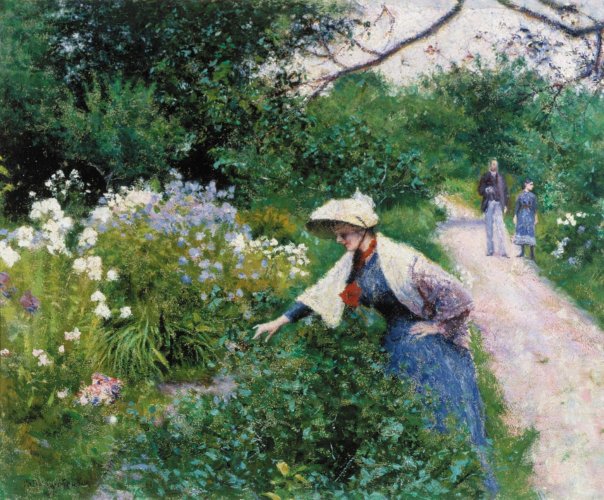Description:
Władysław Podkowiński (1866-1895) studied at the Warsaw Drawing Class under Wojciech Gerson from 1880–1885. For one year he attended the Imperial Academy in Petersburg as a free listener. In 1889, together with Józef Pankiewicz, he went to Paris. There, Claude Monet‘s retrospective exhibition had a huge impact on his creativity, inspiring him to receive Impressionism. The Warsaw exhibition, at which he and Pankiewicz presented their Parisian works in 1890, despite criticism, decided to introduce Impressionism into Polish art. In the next two years, during plein air in Mokra Wieś and Chrzesno, the artist created the flagship works of this direction. At the same time, he painted symbolic paintings, of which the most famous “Frenzy“ was recognized by the younger generation of artists as a manifesto of a new art*.
Description of the painting:
Podkowiński constructed a composition along two intersecting diagonals. One is guided from the left lower corner through the vegetation, further to the figure of the woman through her outstretched arm and the secondary figure of the man. The second is outlined by a bright path. The presented scene seems to be a random frame, suddenly stopped moment. The lack of a hierarchical order in the space emphasizes this apparent randomness. Both the woman presented in the foreground and the couple accompanying her in the background are treated equally with the patch of green and flowers filling most of the canvas. The characters are shown as neutral, not making eye contact with the viewer, blending into the depicted space.
Depending on the way of composing the painting, Podkowiński also differentiated the type and way of applying the paint. In “In the Garden” he used a seemingly dry paint, creating a rough and uniform matter on the canvas, which visually unifies the diverse structures of the objects represented. This resulting surface gives the impression of all the elements shown on the canvas being in harmony. “It is in this autonomy of one of the elements of the pictorial reality that we see the closest approach of Podkowiński to the ‘modernity’ carried by Impressionist painting.”*


